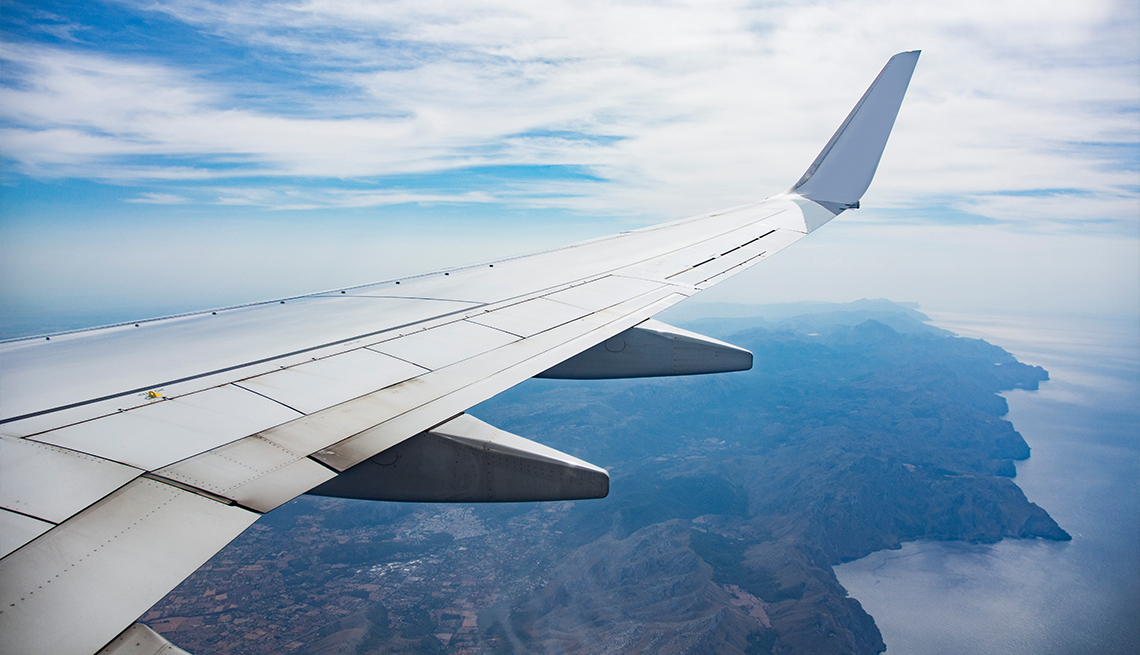
- Select a language for the TTS:
- UK English Female
- UK English Male
- US English Female
- US English Male
- Australian Female
- Australian Male
- Language selected: (auto detect) - EN
Play all audios:
AT THE AIRPORT 10. HOW TO GET LOUNGE ACCESS From free food to comfortable seating, lounges are arguably the best way to optimize airport time. David Slotnick, senior aviation business
reporter at The Points Guy, recommends an airline credit card to access these airport hangouts. “The major three U.S. airlines offer credit cards that include full access to their lounges
when you fly with that airline,” he says. So look for offers from United Airlines, Delta Air Lines and American Airlines. You can also sign up for a card like Chase Sapphire Reserve, which
comes with Priority Pass Select, a membership that provides access to most lounges around the world. 11. OR TRY LOUNGEBUDDY Don’t feel like signing up for another credit card? Amanda
Williams, travel blogger behind the website A Dangerous Business, suggests her favorite lounge app: LoungeBuddy. “If you only find yourself wanting to use an airport lounge once or twice a
year, you’re better off downloading the LoungeBuddy app, which allows you to pay for lounge access only when you want it,” she says. “And it’s often quite affordable.” Priority Pass also
provides a similar service. 12. KEEP YOUR PERSONAL INFORMATION PRIVATE Connecting to public Wi-Fi gives savvy hackers easy access to your personal information. Avoid this scam: Use your
smartphone’s hot spot to connect to the internet more securely. Or invest in a virtual private network (VPN), a service that encrypts your data to keep unscrupulous hackers from stealing
sensitive information online. A VPN costs about $30 to $100 per year. 13. SPEED THROUGH SECURITY To save time at the airport, sign up for at least one of two security options: TSA
[Transportation Security Administration] PreCheck, a trusted-traveler TSA program that expedites the screening process; and Clear, a privately run option that uses biometric data such as
fingerprints and eye scans instead of government photo IDs. “When you use [Clear], you get to skip to the front of the security line,” Slotnick says. He adds that there’s value in having
both programs, but Clear is currently only available at select airports. “If I could only choose one — between PreCheck and Clear — I’d choose the former.” (Note that those who sign up for
Global Entry, a passenger-vetting customs program that expedites reentering the U.S., will automatically get TSA PreCheck.) Be aware, though, that look-alike websites for both programs claim
to help you renew or enroll, but these sites are actually trying to con you out of money and personal information. Always make sure you’re on tsa.gov. 14. CHECK YOUR BAGS Lost luggage may
have curbed many of us from checking bags, but new technology — including bag-tracking features within airline apps — makes it much more reliable. That means no more navigating the tiny
airport restroom with a roller bag, or scrambling for overhead space because you’re in the later boarding groups. “Tracking [bags] through the [airline] app is a great way to avoid anxiety,”
Slotnick says, noting that bag checking has also become significantly more reliable in recent years. For most airlines, bag checking does still come with a fee; you can often avoid that
charge by signing up for an airline’s credit card. 15. SPEND LAYOVERS SIGHTSEEING If you have a bit of travel flexibility, and you want to optimize that downtime in transit, Orlando suggests
being strategic about your flight and layover times. “I either want to have a really short layover — less than four and a half hours — or give me seven or eight hours or more, so I can
really go out and enjoy where I am,” he says. He likes to fly through airports that are well connected to city centers, like in Amsterdam, in order to optimize a long layover. “Many airports
offer tours that operate straight out of the airport.” This includes city tours and even guided layover safaris in destinations like Nairobi, Kenya. Getty Images HANDLING TRANSIT HICCUPS
16. OVERCOME FLYING FEARS Some people don’t like flying because of the travel-day hassle. Others have a real fear that keeps them from stepping foot on a plane — and for that, blogger Coral
Lee, who’s been a flight attendant and cabin manager for over a decade, suggests a fear-of-flying course. “There are many courses offered by airlines or former pilots,” Lee says. The
curriculum includes information on the process of flying, turbulence and landing. Some courses conclude with practice flights taken alongside pilots. Several airports offer classes,
including the Phoenix Sky Harbor International, Milwaukee Mitchell International Airport and San Francisco International Airport. “There are many airlines in Europe that offer fear-of-flying
classes: Air France, Swiss, Air Europa, EasyJet, Virgin Atlantic and Lufthansa,” Lee notes. “I recommend British Airways’ Flying With Confidence course. It was one of the first ones
(started 37 years ago). They offer one of the most complete programs, and they have a 98 percent success rate.” 17. DON’T MISS A FLIGHT-DELAY REFUND The European Union has strict rules that
give passengers compensation when their flight’s delayed more than three hours, Orlando says. “You’ll find your [EU] flights are delayed much less frequently than they are in the United
States. That’s because the EU has strict rules, where there is guaranteed compensation,” he adds. “There are set levels of compensation based on how long the delay is.” You can either fill
out paperwork for compensation on your own or hire a service like AirHelp to file a delay for you. (Sadly, you won’t get this kind of compensation when flying within the U.S.) 18. SAVE
DOCUMENTS IN MULTIPLE PLACES Nothing’s worse than checking your pockets, only to realize your paper travel documents are missing. That’s why Shondra Cheris, of the travel agency Black Will
Travel, recommends having digital copies of everything — boarding documents (via the airline app), passports, visa forms and COVID tests. “Save digital copies to your cloud, Google Drive or
email,” she says. This way, as long as you have your phone or laptop, you can access important travel documents in a pinch. Equally important is having paper versions of important
documents, in case something happens to your phone in transit. This means printouts of scanned travel IDs, tickets, flight confirmation emails and anything necessary for your trip. (Use a
folder to keep printouts organized in your backpack.) 19. DEAL WITH FLIGHT DELAYS IN PERSON “If your flight is delayed, find someone to talk to immediately,” says Pappas, adding that you
should head to the gate or find an airline representative. These days, in-person communication is more efficient than trying to handle an issue by phone. “Right now, there is a huge problem
with long wait times on the phone, so it’s better to deal with this in person, immediately, at the gate.”








